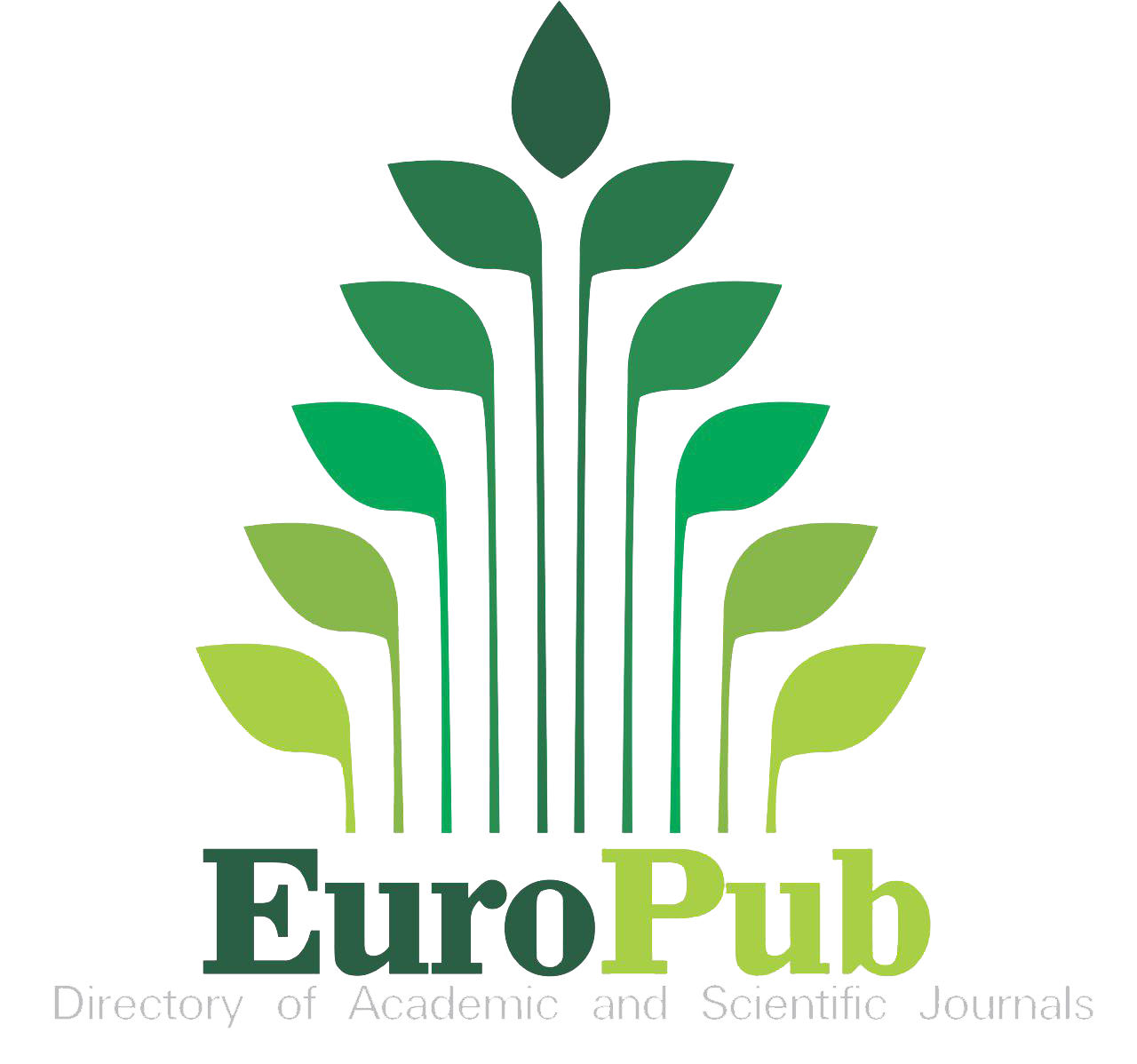Strategic framework for sustaining competitive advantage in accounting services companies: analysis of complementarity between Porter perspectives and dynamic capabilities
DOI:
https://doi.org/10.16930/2237-766220192839Keywords:
Strategic Framework, Accounting Firms, Competitive Advantage, Porter Theory, Theory of Dynamic Capabilities.Abstract
This study aims to develop a strategic framework to support competitive advantage based on the consensus among managers of accounting services in relation to the set of elements of the theoretical perspective of Porter and Dynamic Capabilities (DCs). The study is descriptive, with quantitative analysis, with a sample of 38 companies that provide accounting services, whose answers were obtained mainly from owners, directors, managers, supervisors and coordinators with decision-making power. The results presented a consensus among the professionals of companies that provide accounting services in view of the complementarity between the Theories. In addition, the results present some leveling in the face of differentiation strategies in the Alto Vale do Itajaí market. With this, it was concluded that there was no predominance of consensus of the internal practices of the organizations on any of the two theoretical models analyzed in this study, we highlight the complementarity between the Theories, which would be established in the vision of external and internal elements for making strategic decisions, so a management model was developed to support the competitive advantage based on the basic theories of the present study.References
Albanese, D. E., Briozzo, A., Argañaraz. A., & Vigier, H. (2013). Determinantes de la tercerización del servicio de información contable en las PYMEs: el caso de la Argentina. Revista de Administração Mackenzie, 14(5), 201-229. DOI: https://doi.org/10.1590/S1678-69712013000500008
Andreeva, T., & Chaika, V. (2006). Dynamic capabilities: what they need to be dynamic? [Working Paper, 10 (E)] St. Petersburg State University, São Petersburgo.
Barbosa, F. V. (1999). Competitividade: conceitos gerais. In S. B. Rodrigues. Competitividade, alianças estratégicas e gerência internacional. São Paulo: Atlas.
Bebber, S., Graciola, A. P., Souza, A. V. O., Nodari, C. H., Olea, P. M., & Dorion, E. C. H. (2016). Inovação como estratégia de diferenciação: Produção de vinho Kosher no Vale dos Vinhedos. Desenvolvimento em questão, 14(37), 202-230. DOI: https://doi.org/10.21527/2237-6453.2016.37.202-230
Beuren, I. M., & Oro, I. (2014). M. Relação entre estratégia de diferenciação e inovação, e Sistemas de Controle Gerencial. Revista de Administração Contemporânea, 18(3), 285-310. DOI: https://doi.org/10.1590/1982-7849rac20141394
Brito, R. P., & Brito, L. A. L. (2012). Vantagem Competitiva, Criação de valor e seus efeitos sobre o Desempenho. REA, 52(1), 70-84. DOI: https://doi.org/10.1590/S0034-75902012000100006
Brown, T. (2008). Design thinking. Harvard business review, 86(6).
Brown, T. (2009). Change by design: how design thinking transforms organizations and inspires innovation. New York: HarperCollins.
Burghetti, B. S. (2010). Perspectivas estratégicas para grandes consumidores industriais frente às mudanças regulatórias com a inclusão do livre acesso às redes de distribuição de gás natural canalizado no Estado de São Paulo. Dissertação Programa de Pós-Graduação em Energia, Universidade de São Paulo, São Paulo, Brasil.
Collis, D. J. (1994). Research Note: How Valuable are Organizational Capabilities? Strategic Management Journal, 15, 143-152. DOI: https://doi.org/10.1002/smj.4250150910
D’Aveni, R.A., Dagnino, G.B., & Smith, K.G. (2010). The age of temporary advantage. Strategic Management Journal, 3, 1371-1385. DOI: https://doi.org/10.1002/smj.897
Dallabona, L. F. (2014). Influência de variáveis contingenciais na relação do estilo de liderança à folga organizacional em indústrias têxteis de Santa Catarina. Tese Doutorado em Ciências Contábeis e Administração, Universidade Regional do Blumenau - FURB, Blumenau, Brasil.
Deluca, M., & Souza, M. R. (2004). Varejo supermercadista da Grande Florianópolis: uma análise das cinco forças competitivas de Porter. Revista de Negócios, 9(1), 51-60.
Eckert, A., Milan, G. S., Mecca, M. S., & Nunes, G. P. (2013). Fatores determinantes para a retenção de clientes em escritórios de contabilidade: um estudo multicaso realizado em uma cidade da Serra Gaúcha. Revista Eletrônica de Estratégia & Negócios, 6(3), 50-78. DOI: https://doi.org/10.19177/reen.v6e3201350-78
Eisenhardt, K., & Martin, J. (2000). Dynamic capabilities: what are they? Strategic Management Journal, 21(10), 1105-1121. DOI: https://doi.org/10.1002/1097-0266(200010/11)21:10/11<1105::AID-SMJ133>3.0.CO;2-E
Faoro, R. R., Olea, P. M., Roesch, S. M. A., & Abreu, M. F. (2014). Diferenciação e foco para obtenção de vantagem competitiva: o caso da Beta Sistemas. Revista Eletrônica de Administração, 20(3), 838-856. DOI: https://doi.org/10.1590/1413-2311.0322013.43244
Ferreira, L. C. B. (2010). Ach Brito born again global. Dissertação de Mestrado em Economia e Gestão Internacional, Faculdade de Economia Universidade do Porto – FEP, Porto, Portugal.
Garcia, A. E. G. (2017). A inteligência competitiva e o desenvolvimento de Capacidades Dinâmicas nas organizações. Revista Ibero-Americana de Estratégia, 16(1), 69-90. DOI: https://doi.org/10.5585/riae.v16i1.2439
Ghemawat, P. (2000). A estratégia e o cenário dos negócios. Porto Alegre: Bookman.
Harreld, J., O’reilly, C. A., & Tuschman, M. L. (2007). Dynamic Capabilities at IBM: Driving Strategy into Action. California Management Review, 49, 21-43. DOI: https://doi.org/10.2307/41166404
Hayes, R. H., Wheelwright, S. C., & Clark, K. B. (1988). Dynamic manufacturing: Creating the learning organization. New York Free Press, 429, 27-95.
Helfat, C. E., Finkelstein, S., Mitchell, W., Peteraf, M. A., Singh, H., Teece, D. J., & Winter, S. G. (2007). Dynamic capabilities: understanding strategic change in organizations. Oxford: Blackwell Publishing.
Hogarth, R., & Michaud, C. (1991). Longevity of business firms: a four-stage framework. Fontainebleau: INSEAD.
Kotler, P. (2005). Marketing essencial: conceitos, estratégias e casos. São Paulo: Prentice Hall.
Leite, J. B., & Porsse, M. (2003). Competição baseada em competências e aprendizagem organizacional: em busca da vantagem competitiva. Revista de Administração Contemporânea, Edição Especial, 121-141. DOI: https://doi.org/10.1590/S1415-65552003000500007
Marcus, A. A., & Anderson, M. H. (2006). A General Dynamic Capability: Does It Propagate Business and Social Competencies in the Retail Food Industry? Journal Of Management Studies, 43(1), 19-46. DOI: https://doi.org/10.1111/j.1467-6486.2006.00581.x
Martins, G. A., & Theóphilo, C. R. (2009). Metodologia da Investigação Cientifica. Editora Atlas.
Miranda, K. D. L. G. (2009). As Cinco Forças de Porter e a estratégia como diferencial competitivo: estudo de caso em correspondentes bancários do banco BMG em João Pessoa/PB. Monografia do Curso de Graduação em Administração, Universidade Federal da Paraíba, UFPB, João Pessoa, Brasil.
Nelson, R., & Winter, S. (1982). Na evolutionary theory of economic change. Cambridge: Harvard University Press.
Oening, K. S. (2010). Pluralismo teórico na gestão estratégica: a compreensão da vantagem competitiva a partir da harmonização de perspectivas antagônicas. Revista de Negócios, 15(29), 45-56. DOI: https://doi.org/10.7867/1980-4431.2010v15n1p45-56
Penrose, E. T. (1959). The Theory of the Grown of the Firm. Oxford: Brasil Blackwell.
Pereira, M. C. C. (2005). Empresas de serviços contábeis condicionantes estratégicas para uma atuação empreendedora. Pensar Contábil, 7(29), 1-14.
Porter, M. E. (1980). Competitive strategy: techniques for analyzing industries and competitors.
Porter, M. E. (1999). Competição = On Competition: Estratégias competitivas essenciais. Tradução de Afonso Celso da Cunha Serra. (10a ed.). Rio de Janeiro: Campus.
Prahalad, C. K., & Hamel, G. (1990). The core competence of the corporation. Harvard Business Review, 66, 79-91.
Raupp, F. M., & Beuren, I. M. (2014). Metodologias de custos utilizadas nas maiores indústrias do setor têxtil do Estado de Santa Catarina. Revista Ciências Administrativas, 17(3).
Rumelt, R. P., Schendel D. E., & Teece, D. J. (1994). Fundamental Issues in Strategy. Harvard Business School Press.
Sales, A. S. (2011). Avaliação de uma empresa do setor gráfico a partir do modelo das Cinco Forças de Porter. Monografia apresentada ao curso de Administração, Universidade Estadual da Paraíba - UEPB, João Pessoa, Brasil.
Schumpeter, J. A. (1934). The Theory of Economic Development: An Inquiry into Profits, Capital, Credit, Interest, and Business Cycle. Harvard University Press.
Semuel, H., Siagian, H., & Octavia, (2016). S. The effect of leadership and innovation on differentiation strategy and company performance. 7th International Conference on Intercultural Education “Education, Health and ICT for a Transcultural World”, 237. DOI: https://doi.org/10.1016/j.sbspro.2017.02.171
Shigunov, T. R. Z., & Shigunov, A. R. (2003). A qualidade dos serviços contábeis como ferramenta de Gestão para os escritórios de contabilidade. Revista Eletrônica de Ciência Administrativa (RECADM), 2(1). DOI: https://doi.org/10.5329/RECADM.20030201001
Sirmon, D. G., Hitt, M. A., Arregle, J. L., & Campbell, J.T., (2010). The dynamic interplay of capability strengths and weaknesses: investigating the bases of temporary competitive advantage. Strategic Management Journal, 31, 1386-1409. DOI: https://doi.org/10.1002/smj.893
Teece, D. J. (1976). The multinational corporation and the resource cost of international technology transfer. Cambridge, MA: Ballinger.
Teece, D. J. (1986). Profiting from technological innovation: implications for integration, collaboration, licensing and public policy. Research Policy, 15(6), 285-305. DOI: https://doi.org/10.1016/0048-7333(86)90027-2
Teece, D. J. (1988). Technological change and the nature of the firm. In G. Dosi, C. Freeman, R. Nelson, G. Silverberg, & L. Soete (Eds.), Technical change and economic theory. New York: Pinter Publishers.
Teece, D. J. (2012). Dynamic Capabilities: Routines versus Entrepreneurial Action. Journal of Management Studies, 49, 1395-1401. DOI: https://doi.org/10.1111/j.1467-6486.2012.01080.x
Teece, D. J., Pisano, G., & Shuen, A. (1997). Dynamic capabilities and strategic management. Strategic Management Journal, 18(7), 509-533. DOI: https://doi.org/10.1002/(SICI)1097-0266(199708)18:7<509::AID-SMJ882>3.0.CO;2-Z
Thompson Jr., A., & Strickland III, A. J. (2000). Planejamento estratégico: elaboração, implementação e execução. São Paulo: Pioneira.
Tondolo, V. A. G., & Bitencourt, C. C. (2014). Compreendendo as capacidades dinâmicas a partir de seus antecedentes, processos e resultados. Brazilian Business Review, 11(5), 124-147.
Vasconcelos, F. C., & Cyrino, A. B. (2000). Vantagem competitiva: os modelos teóricos atuais e a convergência entre estratégia e teoria organizacional. Revista de Administração de Empresas, 40(4), 20-37. DOI: https://doi.org/10.1590/S0034-75902000000400003
Wierman, M. J., & Tastle, W. J. (2005). Consensus and dissention: theory and properties, in Fuzzy Information Processing Society, NAFIPS. Annual Meeting of the North American, 75-79.
Wiernan, M. J., & Tastle, W. J. (2007). Consensus and dissention: A measure of ordinal dispersion. International Journal of Approximate Reasoning, 45(3), 531-545. DOI: https://doi.org/10.1016/j.ijar.2006.06.024
Winter, S. (2003). Understanding dynamic capabilities. Strategic Management Journal, 24, 991-995. DOI: https://doi.org/10.1002/smj.318
Zahra, S. A., & George, G. (2002). Absortive capacity: a review, reconceptualization, and extension. Academy of Management Review, 27(2), 185-203. DOI: https://doi.org/10.5465/amr.2002.6587995
Zahra, S. A., Sapienza, H. J., & Davidsson, P. (2006). Entrepreneurship and Dynamic Capabilities: a Review, Model and Research Agenda. Journal of Management Studies, 43(4), 917-955. DOI: https://doi.org/10.1111/j.1467-6486.2006.00616.x
Published
How to Cite
Issue
Section
License
The copyright for articles published in this journal belongs to the author (s), with first publication rights assigned to Revista Catarinense da Ciência Contábil. Due to appearing in this publicly accessible journal, articles are free to use, with mandatory recognition of the original authorship and initial publication in this magazine and for educational and non-commercial applications. The magazine chose to use published works for non-commercial purposes, including the right to submit or work for publicly accessible databases. The content of published articles is the sole and exclusive responsibility of the authors. - The author (s) authorize (s) a publication of the article in the journal; - The author (s) guarantee (s) that a contribution is original and unpublished and that it is not being evaluated in another magazine (s); - A magazine is not responsible for the opinions, ideas and concepts emitted in the texts, for the full responsibility of the author (s); - It is reserved to the editors or the right to make textual adjustments and to adjust the article to the publication rules.
This work is licensed under a Creative Commons Atribuição-NãoComercial-CompartilhaIgual 4.0 Internacional.










